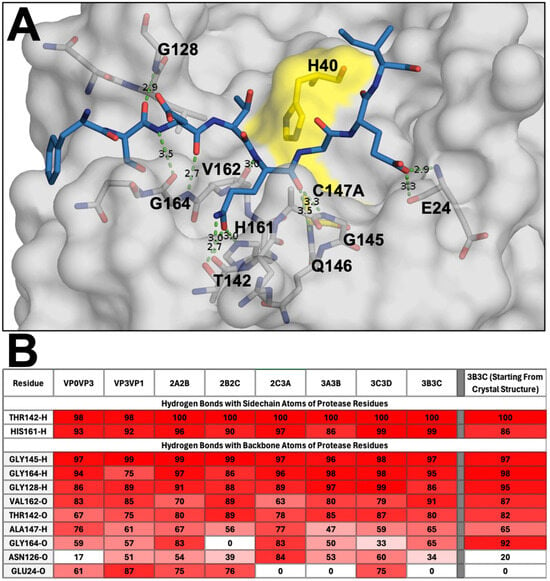
### A Spectroscopic Breakthrough: Mapping Networks of Hydrogen Bonds via Hyper-Raman Scattering
Hydrogen bonds, the unseen forces that account for many of the unique characteristics of water, have captivated researchers for a considerable time. Yet, examining these bonds directly has presented notable experimental difficulties. A novel technique in spectroscopy has recently been introduced, offering a transformative approach to analyze hydrogen-bonded networks in water and other substances. Utilizing the long-established yet underused hyper-Raman scattering methodology, this new technique is poised to yield essential insights into a range of scientific inquiries, some of which have previously been studied solely through computational methods.
Crafted by Sylvie Roke and her colleagues at the École Polytechnique Fédérale de Lausanne (EPFL) in Switzerland, this pioneering application of hyper-Raman scattering may revolutionize the study of interactions in liquids like water. The method not only enables scientists to delineate the complex network of hydrogen bonds but also to investigate how these networks react to varying environmental factors.
#### The Intricate Nature of Hydrogen Bonds
Hydrogen bonds are fundamental to water’s peculiar behavior—like its notably high boiling point, surface tension, and exceptional solvent capabilities. Despite their critical significance, fully grasping the essence of hydrogen bonds has remained a formidable challenge. The subtleties of these bonds involve both quantum mechanical and electrostatic interactions, complicating their experimental and theoretical exploration.
Typically, measuring hydrogen bonds directly depends on analyzing their “stretch mode”—the movement of molecules along the bond. However, probing this movement is notoriously challenging. The specific spectral domain in which hydrogen bonds “stretch” is not only hard to access but also heavily populated with a myriad of low-energy excitations, leaving researchers struggling to derive meaningful data.
“This displacement of water molecules along the hydrogen bond is precisely what needs to be probed,” Roke explained. Nevertheless, the complexity and inaccessibility of this spectral region have created substantial challenges.
Enter **hyper-Raman scattering**, a sophisticated spectroscopic approach initially developed in 1965 that has seen limited use until now.
#### Advancing Hyper-Raman Scattering for Hydrogen Bonds
Conventional spectroscopic methods, such as infrared (IR) and Raman spectroscopy, allow researchers to investigate molecular vibrations, yet their datasets can be intricate and challenging to interpret—particularly concerning hydrogen bonds. Hyper-Raman scattering, a nonlinear spectroscopy variant, can measure vibrational modes akin to Raman techniques. However, it has the additional benefit of being responsive to molecular symmetries that would remain undetectable otherwise. Still, the method hadn’t been extensively applied until recently.
“I’ve often pondered, ‘What motivates someone to use this spectroscopy?’” Roke confessed. “Because essentially, you’re measuring either the IR or the Raman vibrational modes, but the interpretation is considerably more complex.”
By exploring the symmetry characteristics of hydrogen-bonded networks and employing a clever experimental configuration, Roke’s team devised a more straightforward method. They found that by acquiring just four hyper-Raman spectra for each sample (while meticulously adjusting the detector’s position and the light polarization), they could distinguish between interacting and non-interacting molecules. Through what Roke characterized as “adding and subtracting the spectra,” their group could extract information that had previously only been available through computational models.
This innovative technique was termed **Correlated Vibrational Spectroscopy** (CVS), marking a significant advancement in obtaining empirical data regarding hydrogen bonds.
#### Direct Assessment of Hydrogen-Bonded Networks
To confirm their new technique, the researchers employed CVS on both water, abundant in hydrogen bonds, and tetrachloromethane, a liquid composed of non-interacting molecules. As predicted, water displayed a distinct CVS signal correlated with hydrogen bonding—specifically revealing its stretching mode—whereas the tetrachloromethane control yielded a smooth, unvaried spectrum.
Subsequently, the scientists utilized deuterated water (D₂O) to explore the quantum mechanical influences related to hydrogen nuclei. They also investigated how variations in pH and the movement of electrical charge through the hydrogen-bond network influenced the hydrogen bonds. Their findings were compelling. While they noted minimal quantum effect when changing the hydroxide ion (OH⁻) to its deuterated variant (OD⁻), they observed significant spectral shifts upon replacing hydronium (H₃O⁺) with its deuterated equivalent, D₃O⁺. This discovery illustrated that hydrogen nuclei contribute to diminishing the level of charge transfer within the hydrogen-bonded network.
#### Connecting Experimental and Computational Realms
The richness of the team’s experimental results led them to enlist the help of international collaborators from France, Italy, and the UK to interpret the data computationally. These partnerships facilitated a more profound understanding of the quantum mechanical influences at work within hydrogen bonds.
Roke’s ambition for the CVS technique extends